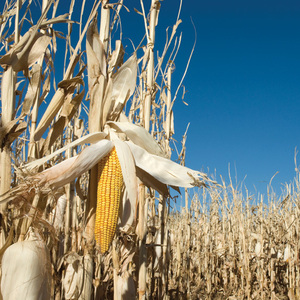WASDE: 2020-'21 corn use in ethanol forecast at 5.2B bushels

August 12, 2020
BY Erin Voegele
The USDA maintained its forecast for 2020-’21 corn use in ethanol in its latest World Agriculture Supply and Demand Estimates report, released on Aug. 12. Projections for corn production and yield were revised up, while corn prices were revised down.
The USDA said the 2020-’21 U.S. corn outlook is for larger supplies, greater feed and residual use, increased exports, and higher ending stocks. Corn production is forecast at 15.3 billion bushels, up 278 million from the July projection. The season’s first survey-based corn yield forecast, at a record 181.8 bushels per acre, is 3.3 bushels higher than last month’s trend-based projection.
Within the WASDE report, the USDA cited a Aug. 12 Crop Production report that shows Illinois, Indiana, Iowa, Missouri, Nebraska, and Ohio are forecast to have yields above a year ago, with record-high yields expected for Minnesota and South Dakota.
Advertisement
Feed and residual use is raised based mostly on a larger crop and lower expected prices.
An estimated 5.2 billion bushels of corn is expected to go to ethanol production in 2020-’21, up from an estimated 4.85 billion bushels in 2019-’20, but down from 5.378 billion in 2018-’19.
Advertisement
Exports are higher reflecting U.S. export competitiveness and relatively low world market prices. With supply rising more than use, ending stocks are raised 108 million bushels to 2.8 billion. The season-average corn price received by producers is lowered 25 cents to $3.10 per bushel.
Internationally, EU corn production is lowered, mostly reflecting reductions for Romania and France that are partially offset by increases for several countries, including Poland, Italy, and Hungary. Ukraine corn production is forecast higher, largely reflecting higher expected area. Other notable corn production changes include projected increases for Mozambique and Malawi, with reductions for Canada and Thailand.
Corn imports are raised for the EU, Canada and Thailand, but reduced for India. Foreign corn ending stocks are slightly lower relative last month, reflecting an increase for Indonesia that is more than offset by declines for Canada and India.
Related Stories
The USDA reduced its estimate for 2024-’25 soybean use in biofuel production in its latest WASDE report, released May 12. The agency expects soybean oil use in biofuel to increase during the 2025-’26 marketing year.
HutanBio's microalgal biofuel production shown to be net-negative in an independent life cycle assessment by EcoAct
HutanBio on May 8 announced that the production process for its proprietary HBx microalgal biofuel achieves net-negative carbon emissions, based on an independent cradle-to-gate life cycle assessment (LCA) conducted by EcoAct.
According to a new economic contribution study released by the Iowa Renewable Fuels Association on May 6, Iowa biofuels production has begun to reflect stagnant corn demand throughout the agriculture economy.
Repsol and Bunge on April 25 announced plans to incorporate the use of camelina and safflower feedstocks in the production of renewable fuels, including renewable diesel and sustainable aviation fuel (SAF).
U.S. operable biofuel capacity in February was unchanged from the previous month, according to data released by the U.S. EIA on April 30. Feedstock consumption for February was down when compared to both January 2025 and February 2024.
Upcoming Events










